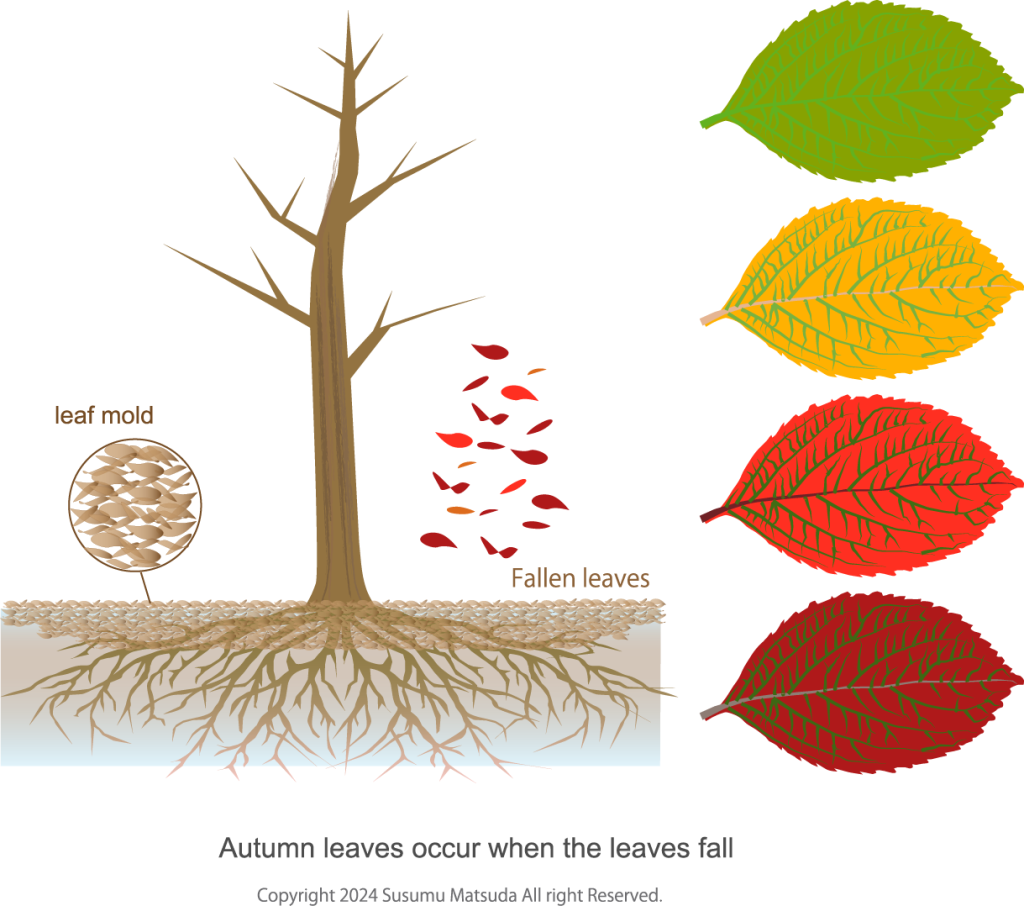If we look at the ecology of the natural world and investigate it, we can see that trees are very intelligent plants. During the high temperatures of spring and summer, trees absorb sunlight, convert it into energy to live through photosynthesis, and grow while storing energy in their bodies. When the temperature of the atmosphere starts to drop, they begin to prepare for hibernation, shed their leaves, and survive the winter with minimal energy consumption. Trees detect changes in atmospheric temperature and determine when to shed their leaves. Trees shed their leaves because the sunlight decreases and the efficiency of photosynthesis decreases, and they shed their leaves to reduce wind resistance and reduce the risk of the tree trunk being broken or damaged by strong winter winds. For safety reasons, trees predict when to enter hibernation and decide when to shed their leaves to protect their lives. If a tree makes a mistake about when to shed its leaves and makes the decision too early, it will lack the energy to survive in the winter. Also, if the decision to shed its leaves is made too late, the trunk will break due to strong winter winds, putting its life in danger. -A single tree maintains its life by making the decision to shed leaves based on experience.

For a tree, the decision to shed leaves is very important in order to spend the winter safely. The way trees shed their leaves makes sense in order to maintain life. When the atmosphere drops and the efficiency of photosynthesis decreases, the tree begins to prepare to shed its leaves. The tree gradually begins to return the chloroplasts that were filled in the leaves to the main body. Chloroplasts use the energy of the sun to convert water into oxygen and carbon dioxide into sugar (sucrose). Chlorophyll is green, and the vibrant green of leaves is due to chloroplasts. In autumn, trees remove chloroplasts from their leaves, causing the color of the leaves to change from green to red. Autumn leaves occur when chloroplasts are removed from the leaves. When chloroplasts are removed from the leaves, the leaves lose moisture rapidly. After that, the base of the leaves changes to a cork-like state, making them more likely to fall, and defoliation occurs. Leaves that fall to the ground accumulate and absorb moisture, causing bacteria to grow and turning into humus, providing nutrients to the soil and eventually becoming part of the soil. Please refer to blog episode 212 for an explanation of soil formation. Fallen leaves are one of the important elements that maintain the earth’s soil. Trees make a significant contribution to maintaining the earth’s environment.